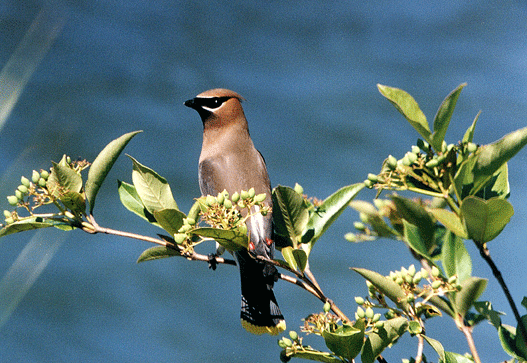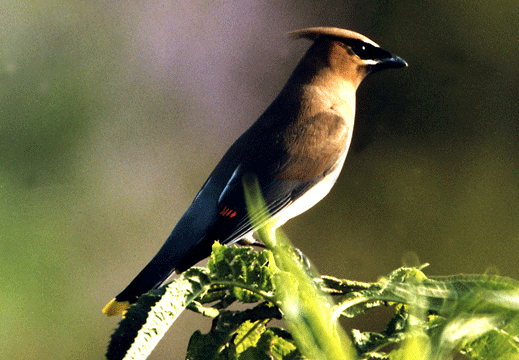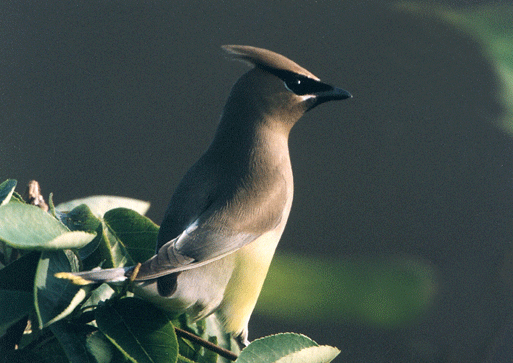Cedar Waxwing Bombycilla cedrorum
Cedar Waxwing
Bombycilla cedrorum
 The Cedar Waxwing is a very sociable bird rarely seen alone as it is almost always in flocks. The name waxwing comes from the waxy red appendages found in variable numbers on the tips of secondaries of some birds.
The Cedar Waxwing is a very sociable bird rarely seen alone as it is almost always in flocks. The name waxwing comes from the waxy red appendages found in variable numbers on the tips of secondaries of some birds.
Cedar Waxwings with orange instead of yellow tail tips began appearing in the northeastern U.S. and southeastern Canada beginning in the 1960’s. The orange color is the result of a red pigment picked up from the berries of an introduced species of honeysuckle. If the waxwing eats the berries while growing a tail feather, the tip of the feather will be orange.
 The Cedar Waxwing is one of the few temperate dwelling birds that specializes in eating fruit. It can survive on fruit alone for several months. Unlike many birds that regurgitate seeds from the fruit they eat, the Cedar Waxwing defecates fruit seeds. It eats a wide variety of berries and small fruits, such as mulberries, elderberries, serviceberry, juniper, dogwood, rosehips wild cherries and blueberries. It also feeds on sap and flowers and many insects, often caught on the fly.
The Cedar Waxwing is one of the few temperate dwelling birds that specializes in eating fruit. It can survive on fruit alone for several months. Unlike many birds that regurgitate seeds from the fruit they eat, the Cedar Waxwing defecates fruit seeds. It eats a wide variety of berries and small fruits, such as mulberries, elderberries, serviceberry, juniper, dogwood, rosehips wild cherries and blueberries. It also feeds on sap and flowers and many insects, often caught on the fly.
 Nesting late in midsummer it will raise two broods per year.
Nesting late in midsummer it will raise two broods per year.
.
Copyright Mark Tiefenbach
Deepbrook Nature Photography
Copyright Mark Tiefenbach
Deepbrook Nature Photography
Copyright Mark Tiefenbach
Deepbrook Nature Photography


